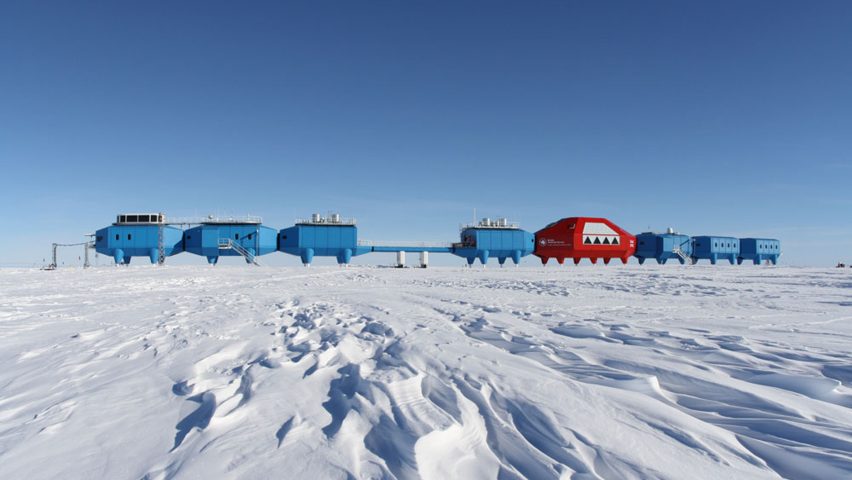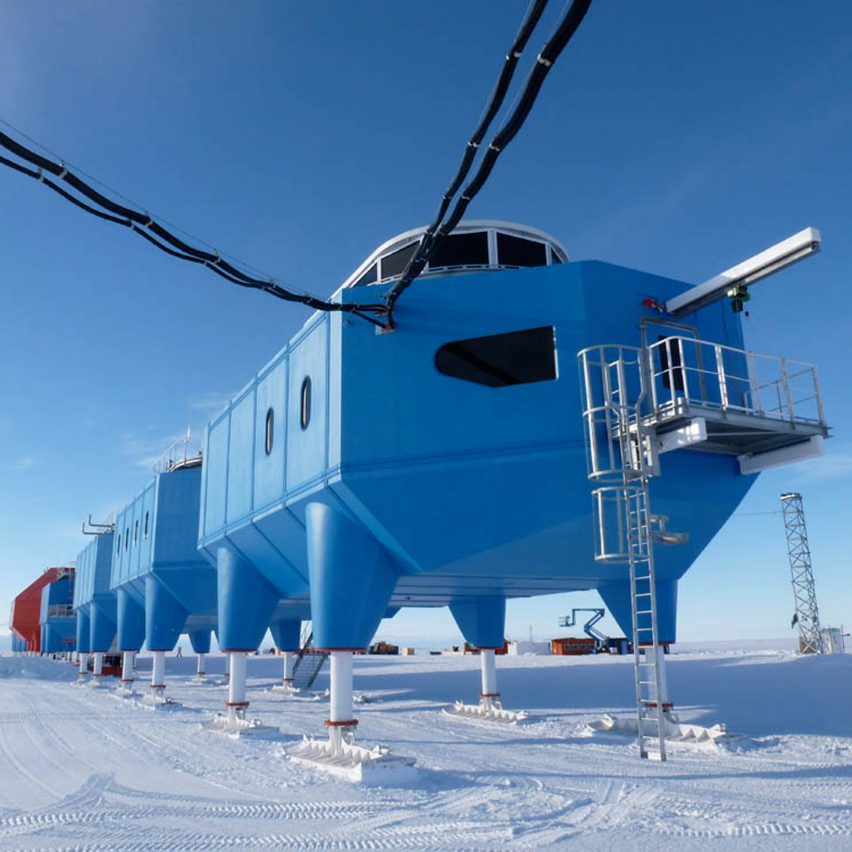
Antarctic research centre to be towed inland to escape dangerous ice crack
The world's first mobile research centre on the floating Brunt Ice Shelf in Antarctica is going to be moved to a new location for the first time, due to fears it could be trapped on an iceberg.
Designed by Hugh Broughton Architects for the British Antarctic Survey (BAS), the Halley VI Antarctic Research Station has only been operational since 2013, but now needs to be towed 23 kilometres to a new location.
This is because a chasm that had previously been dormant for approximately 35 years started to grow just after the station was installed, putting it at risk of separating from the ice shelf.
A second chasm was also discovered in October 2016, 17 kilometres north of the research station, on one of its service routes.
"The chasm, if it continues to grow, will eventually produce an iceberg and if we left the station where it is at the moment it would be on that iceberg," said BAS director of science David Vaughan, speaking to Sky News.
The £25.8 million research station is built to withstand extreme winter weather. Made up of seven interlinking blue modules, the structure is raised on hydraulically elevated feet to stay above the many metres of expected snowfall.
These ski-like feet also make it possible to tow each of the modules over a prepared ice track. But the team did not expect to have to move the building less than five years after the facility opened.

"Halley was designed and engineered specifically to be re-located in response to changes in the ice," said Tim Stockings, BAS director of operations.
"Over the last couple of years our operational teams have been meticulous in developing very detailed plans for the move and we are excited by the challenge," he continued.
"Antarctica can be a very hostile environment. Each summer season is very short – about nine weeks. And because the ice and the weather are unpredictable we have to be flexible in our approach."
The relocation project is already underway, and is expected to take three years, completing in 2018.
The focus over the past year has been to carry out in-depth site surveys and preparations, ahead of establishing temporary camps and relocating major infrastructure in 2017.
"We are especially keen to minimise the disruption to the science programmes," explained Stockings.
"We have planned the move in stages – the science infrastructure that captures environmental data will remain in place while the stations modules move."
Halley VI contains space for up to 52 crew members in summer and just 16 in the three winter months of total darkness, when temperatures drop as low as -56 degrees Celsius.